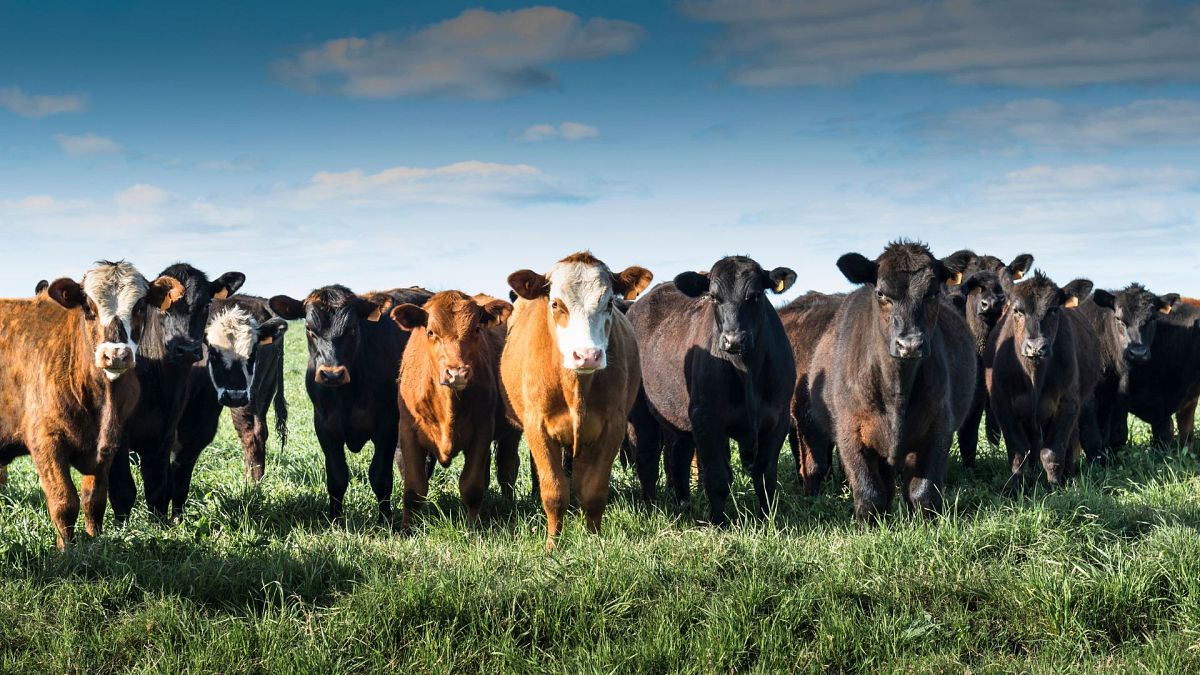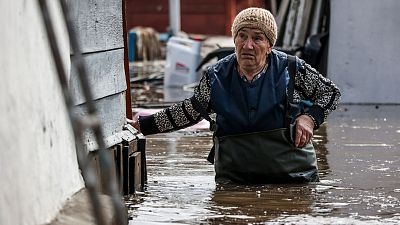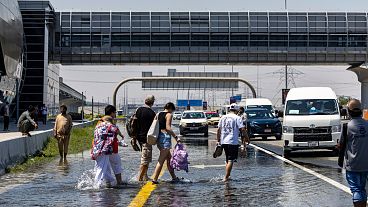The farm has been a beacon of hope for the red meat industry, which is under pressure to show that sustainable farming is possible.
A livestock farm in Australia that won plaudits for being carbon neutral is no longer able to offset its emissions.
Jigsaw Farms in south-western Victoria was well ahead of the curve at countering the hefty climate impact of cattle farming, boasting its carbon neutral status as early as 2011.
But a new report tracking the family farm’s climate impact suggests it tipped into the red in 2017, and has since been emitting more greenhouse gas emissions than it can sequester.
Mark Wootton and Eve Kantor’s farm, 250 km west of Melbourne, hosts a fine wool merino operation with around 20,000 ewes and 550 cattle.
Their story shows the intractable challenges in dealing with meat’s methane and land-use problems.
How did Jigsaw Farms become carbon neutral and what’s changed?
Spanning 34 square kilometres of land, Jigsaw Farms comprises lush pastures and eucalyptus plantation, threaded together by wetlands and wildlife corridors to encourage biodiversity.
Planting hundreds and thousands of trees while nurturing the soil helped to sequester a significant volume of carbon. This effectively neutralised the annual emissions of wool, lamb and beef production.
“In the early 2010s we were pretty cocky that we had conquered this thing,” Wootton told the UK’s Guardian newspaper. “We thought we’d cracked the formula.”
But a new report, which is yet to be peer-reviewed, finds this balance was relatively short lived.
“Cows and sheep are still there producing the same amount of methane [every year], but the trees grow up and carbon sequestration slows down,” report author, Prof Richard Eckard, told the paper.
An agricultural economist, Eckard has been studying Jigsaw’s emissions for years in his role as the director of the school of agriculture, food and ecosystem sciences at the University of Melbourne.
He describes “the law of diminishing returns” behind the carbon flip. Young trees absorb more carbon as they grow, and Jigsaw’s have now passed the point of peak sequestration - meaning they take in less CO2 year-on-year. While the soil, initially boosted by a switch to deep-rooted perennial grasses, is now saturated with carbon so can’t take in any more from the atmosphere.
According to the study, the farm sequestered 70.3 per cent to 83 per of its annual emissions in 2021. By 2031, Eckard’s model predicts Jigsaw will absorb just over half of what it did in 2012, when carbon sequestration peaked.
Wootton and Kantor are still confident about the wider benefits of regenerative farming, and open-minded on the road to net zero. “We see our business as a process of trial and error,” their website states.
“People come to us and go, shit, if they can’t go carbon-neutral, what does that mean for us,” Wootton tells the Guardian. “It means you’ll have to do some of what we’ve done, do things differently from what we’ve done, and do some other things that we don’t even know we can do yet.
What strategies are farmers using to go carbon neutral?
Though it garnered unique attention in the Australian media, Jigsaw Farms isn’t the only operation in reach of carbon neutrality.
One farm on the Cornwall-Devon border in the UK, for example, claims to have got there through a mix of crop rotation, tree protection and carefully-selected cattle.
Cutting methane from cows
Methane emitted by cows accounts for a whopping 80 per cent of the sector’s emissions, which makes this a key target area for climate-conscious farmers.
Solutions have ranged from the absurd - a burp-filtering cow mask - to the prosaic, with farmers selecting cows that grow faster and die earlier, thus emitting less methane before people eat them.
A number of companies are working on seaweed cow feed - which has been touted as capable of cutting methane by 80 per cent. But real-world tests have yet to be so successful, with one Australian trial only managing a 28 per cent cut from a seaweed supplement last year.
Eckard’s Primary Industries Climate Challenges Centre (PICCC) is also working in this field, researching the long-term impact of a number of feed options including encapsulated nitrate additives, a rapidly digested starch supplement like wheat or barley, and a fat supplement.
But the industry is still belching out methane at an unsustainable rate.
Planting perennials to suck up carbon
Perennial plants are those that persist over several years, averting the need to sow and clear the ground.
They form stronger symbiotic relationships with bacteria and fungi as a result, reducing erosion and drawing down more carbon than annuals.
Jigsaw primarily uses Holdfast GT Phalaris, a grass developed by Australian scientists, and rye grasses. The Carbon Neutral Beef company near Holsworthy in England has gone down a similar route, introducing herbal and legume crops into its grazing system.
These plants have various root lengths, which bring up minerals from deep underground for the cattle to consume while grazing, reducing the need to buy in minerals. The nitrogen they absorb from the air also acts as a natural nitrate fertiliser, meaning less chemical fertiliser is needed.
With roots almost ten times deeper than typical grass, their greater carbon-capturing abilities are a real asset to any farm wanting to reach carbon neutrality. But again, they can’t tackle farming’s polluting problem alone.
Some farms are also experimenting with spreading rocks or concrete dust over the land, sequestering more carbon in a process known as enhanced weathering.
Is carbon neutral beef farming possible?
Individual studies like those tracking Jigsaw’s emissions are needed to weigh up the claims of animal farms.
Agriculture writer and farming critic George Monbiot compares it to banking: there is both the climate current account and climate capital account to consider. The former refers to the gases released by farming animals, while the latter covers the carbon dioxide the land could absorb if it were a wild ecosystem.
The issue is that while individual farms like Jigsaw can be exemplary, carbon neutral farming on the scale that meat is currently demanded is simply unworkable.
Around 45 per cent of the world’s habitable land is currently used for agriculture, according to a new study from Our World in Data. 80 per cent of this land is dedicated to either grazing animals or growing crops used to feed livestock - a surface area equivalent to the Americas.
The remaining portion of habitable land is already dominated by forests, so it’s hard to see where the trees needed to offset the world’s farms could go.
Much less land can be used for farming, the data analysts conclude - and should be, not only to tackle climate change but also biodiversity loss, which food production is the biggest driver of.
This article has been changed as climate current account and climate capital account were previously the wrong way round.



